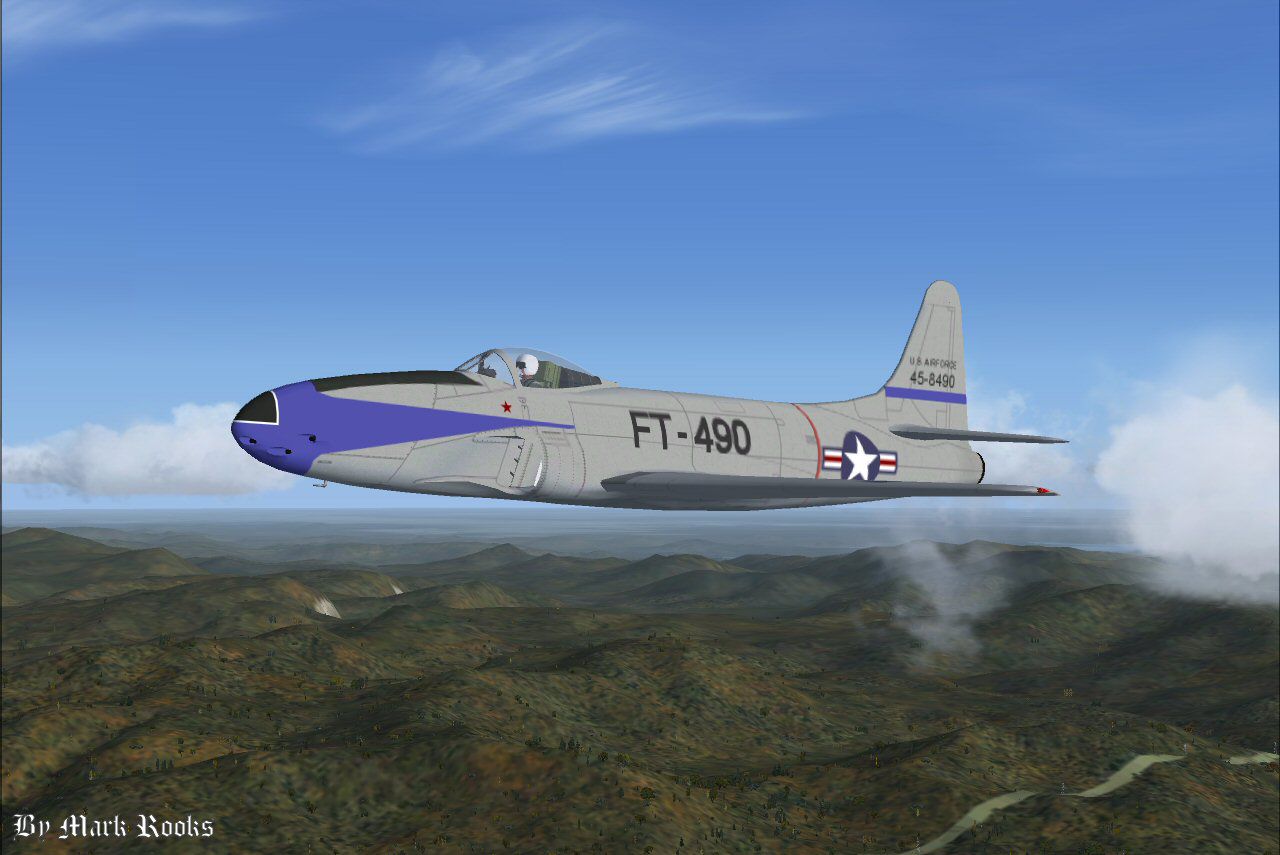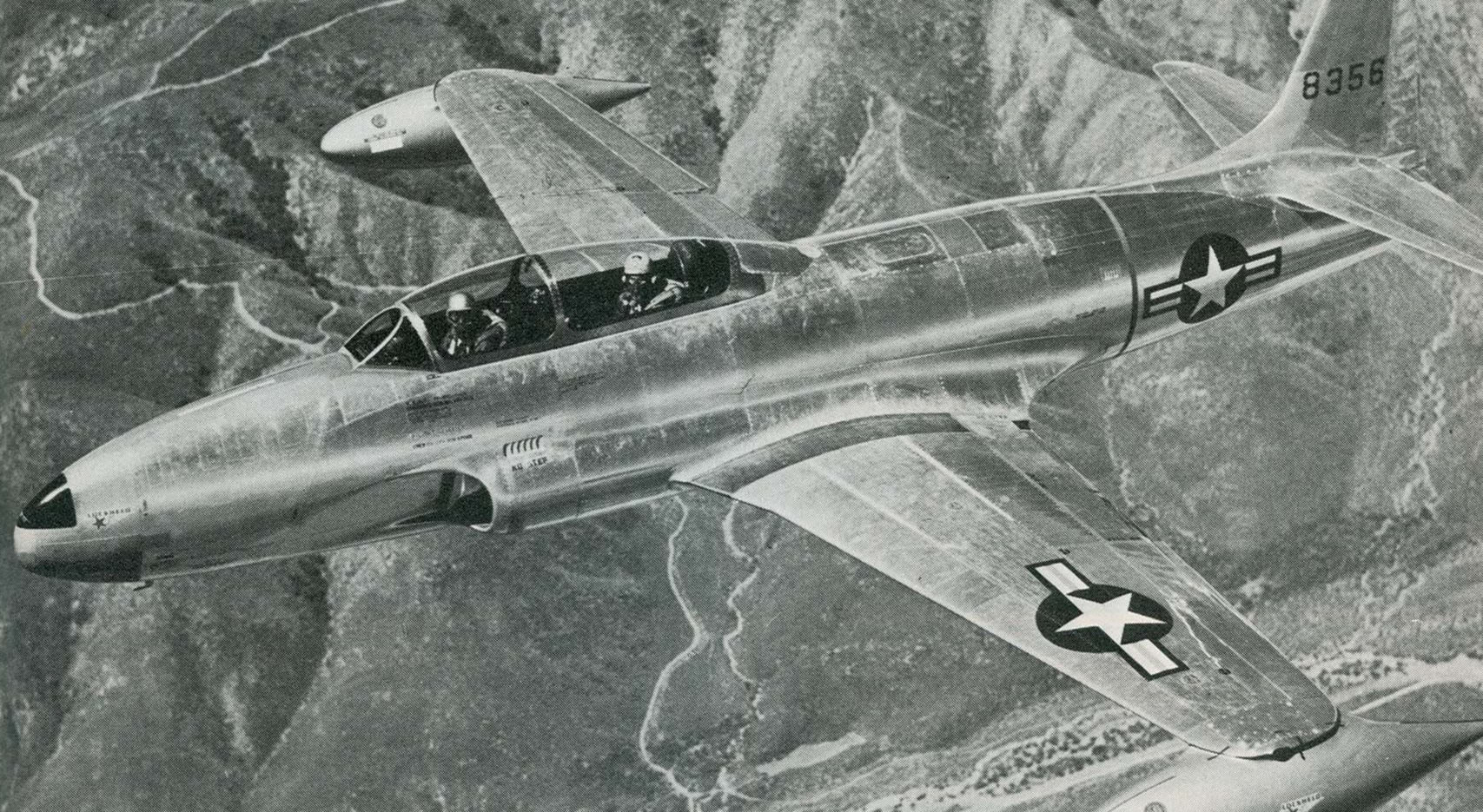P 80 Aircraft - In the summer of 1943, Lockheed chief engineer Kelly Johnson recruited an elite team of engineers and factory mechanics to work in a circus tent he had set up in the attic of a hazardous materials factory at the edge of Lockheed's Burbank, California, facility. The purpose was to keep curious onlookers.
All they had to tell their team, under the command of the Air Force from the US Air Force, would be expected to work for 10 hours a day, six days a week, the foreseeable future on the new prototype aircraft. They would work in secret, under his command, to meet the most impossible specifications.
P 80 Aircraft

The group accepted the terms without hesitation, although few knew the full story. Recently developed German jet fighters, with their superior speed and acceleration, remain standards for dominating the skies over Europe. And the US War Department, hoping to quickly level the playing field, enlisted Johnson to build what would become America's first truly operational jet fighter - the P-80.
Project Extraversion: P 80 Shooting Stars In World War Ii
With the urgent need to meet the rapidly emerging German threat, the War Department gave Johnson a fatally insurmountable plan and 150 days to build a new aircraft.
R. And they did it free. Over the next six months, the Lockheed team exceeded expectations, delivering a polished XP-80 prototype in 143 days, seven days ahead of schedule.
It was called the Falling Star in honor of its extraordinary speed, with some modules capable of 600 mph. With its bullet-shaped fuselage, light fins and smooth skin, the P-80 was not only a looker but also a terror attack, with six .50-round machine guns and pods carrying bombs, a lethal mix of power and speed. .
Although the P-80 did not see action in World War II, the rapid delivery of the Shooting Star by Lockheed set the stage for the early dominance of the Shooting Star in the Korean War as America's front-line fighter.
Aviation Decor Design Blueprint Aircraft Invention 1946 Lockheed P 80 Shooting Star Airplane Patent Print Gift Aviation Poster Art & Collectibles Prints Jan Takayama.com
About 75 percent of the enemy's losses in the first months of the Korean campaign were due to aerial shooting stars. In 1950, a P-80 under the control of Lt. Russell Brown had piloted a North Korean MiG-15 in the world's first jet-vs-jet aerial combat. This success paved the way for subsequent iterations of the P-80, such as the P-80B, which introduced the first ejection seat in US production aircraft, the F-94 all-weather interceptor, and the T-33 fast trainer; which remained in service until 1997.
Subscribe to the Lockheed Martin star passenger newsletter Get articles about the innovative projects Lockheed Martin scientists and engineers are currently working on. The Lockheed P-80 Shooting Star was the first operational jet fighter to be used by the United States Army Air Forces (USAAF) during World War II.
Designed and built by Lockheed in 1943 and just 143 days from design start, production prototypes flew, and two very limited pre-production prototypes saw service in Italy just before World War II. Designed as a straight wing, the type saw major combat in Korea with the United States Air Force (USAF) as the F-80.

America's first successful turbojet fighter, it was soon ousted by the MiG-15 transonic fighter and quickly replaced in the role of transonic air superiority by the F-86 Sabre. The F-94 Starfire, a weather interceptor using the same aircraft, also saw the Korean War. The closely related T-33 star trainer remained in service with the US Air Force and Navy well into the 1980s, with the latest NT-33 variant arriving only in April 1997.
Lockheed F 80c Shooting Star > National Museum Of The United States Air Force™ > Display
The XP-80 had a conventional metal fuselage, with a small narrow wing and tricycle landing gear. As it was designed in the early stages of World War II and before the Allies captured German research data confirming the speed advantages of trailing wings - the XP 80 had straight wings, similar to those of fighter jets. The first operational jet fighter wanted to have its flap in the fuselage, a form previously used on the German Heinkel He 178 V1 of 1939, and the later British Gloster E. 28/39 Demonstrator of 1941. Other early flaps had almost two. Girls due to their limited power, these nacelles are mounted externally for easier maintenance. With the arrival of more powerful British aircraft, the fuselage assembly was more efficient and was used by almost all later fighter aircraft.
Lockheed was the first American aircraft company to begin work on a force aircraft, beginning work on the L-133 in 1939. The L-133 was eventually developed into a highly advanced design, including futuristic features such as canards in front of the wings and a winged fuselage wing, but when Lockheed handed the design over to the USAAF, it was rejected as technically impossible.
Instead, the USAAF developed a much less radical version of the bell-shaped P-59 Airacomet, which first flew in October 1942. However, it soon became apparent that the performance was only marginally superior to the P-59 fighter.
Bell's preliminary work on a revised version of the P-59 with a single fuselage trap and a low-wing launcher was designated the XP-59B, but at this time the Bell factory was inundated with other work as work in the USAAF transferred this design to Lockheed.
Lockheed P80 Shooting Star
The impetus for the development of the P-80 was the discovery by Allied intelligence of the Me 262 in the spring of 1943, which had only made test flights of its first prototype (V1 to V4 aircraft), at the time of design prototypes, all equipped. . With retractable rear wheel port gear. After receiving documents and blueprints covering years of British jet research, the commander of the Army Air Forces, H. H. Arnold, believed that a British-made Halford H-1 B "Goblin" jet engine could be developed for acceptance. to break new German, and the research and development division of the Wright Field Materiel Command commissioned Lockheed to design an aircraft based on experience with the L-133. Concept work on the XP-80 began in May 1943. As the British turbojet had not yet been delivered, Lockheed obtained its own drag systems from Wartime orders from the USAAC.
Lockheed's team of 28 engineers was led by Clark L. "Kelly" Johnson in the same way as the P-38 Lightning, in the same remote building with high security and greater autonomy, a continuation of Lockheed's Skunk Works style research. and progress.
With the Germans and British far ahead of the advance, Lockheed forced the force to rise as quickly as possible. Kelly Johnson submitted the design proposal in mid-June and promised that the prototype would be ready for testing within 150 days.

The project was so secret that only five of the approximately 130 people working on it knew they were developing the aircraft, and the British engineer who provided the Goblin trap was arrested by the police because Lockheed officials could not call him.
Lockheed P 80/t 33 Shooting Star & F 94 Starfire Pdf Ebook + Flight Manuals
After the trap was attached to the fuselage, the alien objects destroyed the damage during the first run-up. The British manufacturer who supplied the trap warned Lockheed that the skin on the inlet ducts was too thin, but the American manufacturer ignored this warning and cut both passages and sucked the trap into the throat.
The first prototype (44-83020) was nicknamed Lulu-Belle (also known as the "Grey Hornet" due to the color scheme. Powered by a later Halford H1 canopy from the prototype de Havilland Vampire jet fighter;
It first flew on January 8, 1944, with Lockheed experimental pilot Milos Burch at the helm. After this flight, Johnson said, "It was a great demonstration, our plane was a success - such a successful success that it overcame the time advantage that the Germans had gained during the years of preliminary development." The jet engines and data programs donated by the British proved invaluable. During test flights, the XP-80 eventually reached a top speed of 502 mph (808 km/h; 436 kn) at 20,480 ft (6,240 m), becoming the first USAF turbojet aircraft to exceed 100 mph in flight, since the August 1944 flight record of 811 km/h (438 kn) with a particular speed variant
Of the Republic P-47 Lightning. Contemporary pilots, crossing the edge of a burst like a falling star, were unaccustomed to flying at high speed without a high-reciprocating leg and had to learn to rely on airspeed index.
The Us Ww2 Jet Fighters
The second prototype, designated the XP-80A, was designed for the larger General Electric I-40 engine (an improved J31, later produced by the Allison J33). Two aircraft (44-83021 and 44-83022) were built. 44-83021 was nicknamed the Gray Spirit after its "pearl gray" paint scheme, while 83022, which was abandoned due to its airiness, became known as the Silver Spirit. The first flight test of the XP-80A was unimpressive, but the biggest problems with the design were soon ironed out and fixed during development. Initial feedback on the XP-80A was not positive, with Lockheed Chief Engineering Test Pilot Milo Burcham promising the aircraft he was very happy with (powered by a Halford gin) had already become a "dog". XP-80As
P 80, p aircraft, aircraft a&p, p 39 aircraft, p-80, aircraft a&p license, aircraft a&p schools, aircraft a&p jobs, p 40 aircraft, a&p aircraft mechanic, a&p aircraft maintenance, p 51 mustang aircraft
0 Comments